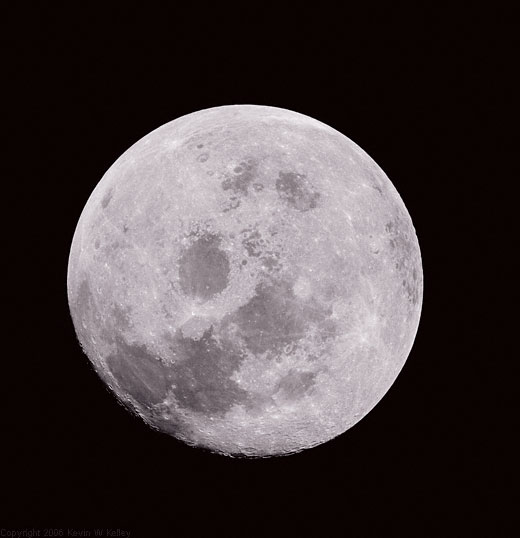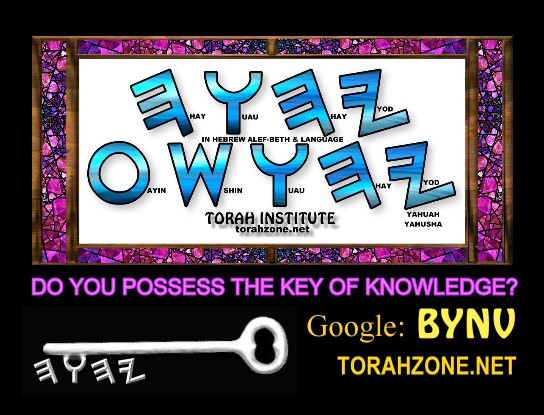
SANHEDRIN CALENDAR
HOW SPRING AND THE FIRST MOON IS CALCULATED,
According to those who received the Living Words
Isaiah / YashaYahu 51:1 “Listen to Me, you who pursue righteousness, seeking Yahuah:
Look to the rock you were hewn from, and to the hole of the pit you were dug from."
Among many people and their teachers today, there is controversy over what a "renewed moon" is, and how to calculate the 1st moon of the year. Today there are Enochian calendars, Creation calendars, Lunar Sabbather calendars, and for almost as many as there are teachers, we find some form of a calendar being promoted. With all these calendar specialists out there, which voice are we to listen to?
This article concerns interpretation, not rebellion or condemnation. About every third year, we encounter some level of disagreement within Yahusha's body (Covenant people, Israel) over the necessary adjustment of the number of moons for that year. The “intercalating” (adding) of an extra month is sometimes needed to keep the seasons balanced with the months, so about 7out of every 19 years needs to have 13 months. The last sitting Sanhedrin set up the standardized method for the calendar, so the only authority to overrule this would be the entire Body of Mashiach. The added moon (13th month) has to be done sometime, so why not just acknowledge it and do it in unity? Otherwise, we'll each be doing whatever is right in our own eyes, and observing the moedim (appointed High Sabbaths) at diverse times from one another. As you may know, there are divisions over this, concerning the sighting of the barley in Israel, when a day begins, when a moon begins, and so on.
The first moon of the year arrives when the sun nears the equator, and we begin to see grasses, shrubs, and trees begin to bud. Barley is one of these, but barley alone does not determine when we watch for the first moon; we are simply told to bring a sheaf of the harvest (the cultivated crop planted) to the priest (SEE LEV. 23:10), and this occurs during the week of Matsah, aka Unleavened Bread. If each one of us privately interprets how and when to do things -- as it seems most do -- people will remain divided. That's why we must search out the TRUTH of every matter carefully -- and it's not hard to do. The brother that's been doing it for thousands of years knows how it's done, but the younger brother, in arrogance, thinks he knows as well.
ABIB - SPRING: THE FIRST MOON OF THE YEAR (SPRING, EX. 12:2)
"Abib" means ear, or grain, but not a green ear. The sun, moon, and stars are all used together for days, years, signs, and moedim (called "seasons", or appointments). Torah doesn't come out and actually say "equinox", but uses the word tekufah (CIRCUIT OF TIME); this is because the SUN (and Earth's rotation, tilt, & orbit around it) determines days and years.
So, "ABIB" would pertain to the ripe grain, harvested and taken from the planted crops to be waved by the High Priest. The barley plays no role presently, because there is no operating priesthood conducting any of the waving of the first-fruits aspects of the instructions in Torah. We Natsarim know that Yahusha fulfilled this first fruits offering when He resurrected and presented Himself before Yahuah. Yahusha is the sheaf, and He ascended to wave Himself on the day of His Resurrection - and it was NOT Abib 16 (the first High Sabbath of Matsah). He performed this wave sheaf/omer during the feast of Matsah, on the day after the weekly Sabbath, as prescribed at Lev. 23. There has been a change in the priesthood - see Hebrews 8. Without an operational Temple with priests performing daily duties, and a high priest to physically satisfy the prescribed offerings, it becomes difficult to take a Nazirite vow, or bring barley, or do anything but seek out the lost sheep -- which is our duty now as priests according to the order of Melckizedek. If anyone tells you they waved barley or took a Nazirite vow, ask them where they are hiding their time machine! Only the High Priest is to wave the sheaf, and that's Yahusha (He's both the sheaf and the High Priest). So, the unbelieving Karaites don't agree with us on every point. Ultimately, it's not BARLEY, but it's Yahusha they should have been watching for. The barley was a metaphor or allegory which pointed to Yahusha, and His resurrection as "First-fruits". Now, when we see the full barley crop ready to be harvested, we can better appreciate what Torah was pointing at. Yahusha is the first harvest, and we His qodeshim (saints) are part of a group of the first-fruits; the larger wheat harvest in the fall are those who respond to our planting and watering work. See? It's all about "shadows" of meaning -- we need to be more concerned about the meaning behind the actual grains growing in the ground.
Many Messianics (Natsarim) are being taught to watch for "green ears", then watch for the next new moon; but this is not what is to be done according to Scripture. This kind of instruction is keeping those of us returning to the Covenant from walking with the older brother, who has been observing the annual festivals for thousands of years. We not told to look for "green ears" first. During the week of Matsah, which starts 2 weeks after the 1st moon begins, the high priest was to reap the first-fruits of the crop - a ripened crop showing seed. Barley flashes-up quickly in the springtime, just as your lawn goes to seed if you don't cut it for about a week or two. Yahusha is the "barley wave-sheaf" Himself, and His resurrection is pictured in the reaping of the first OMER of barley, and He waved HIMSELF before Yahuah on the first day of the week, long ago.
As Rob Miller explained it so well, "Since the discrepancy between the solar and lunar years amounts to 207 days every 19 years, the "leap month" of Adar Sheni is added to the third, sixth, eight, eleventh, fourteenth, seventeenth and nineteenth year of every nineteen year period, that is, seven times in a 19-year lunar cycle." In other words, 7 years out of every 19 years must have 13 months -- so the last sitting Sanhedrin ordained that a month is to be added, or "intercalated", making those years have an ADAR I and an ADAR II. A month is added (making 13 moons) in 7 out of every 19 years. The WHOLE barley harvest must be ready to harvest, and ready to reap: "When you come into the land which I give you, and shall reap its harvest, then you shall bring a sheaf of the first-fruits of your harvest to the priest." Lev. 23:10. The barley plays an important part, but it still is the "finger" pointing to Yahusha, our true "first-fruits offering", Who offered Himself to the Father. To keep looking at the finger (barley) is a very foolish thing to do -- it signifies the Mashiach, who "waved" (was dead, then came back to life) before the Father, Yahuah. The morning after His resurrection, Yahusha would not allow Miryam of Migdal to touch Him, because He had not yet ascended to present Himself as the first-fruits wave offering. Later that same day, He appeared to His talmidim and allowed them to touch Him.
Was the “last supper” the Passover meal commanded on the 14th day
of the moon?
Pesach, Passover:
(ref. Lev. 23, Dt. 16)
The memorial meal in the evening of the 14th of Abib (or Nisan), as we
understand it, is at the beginning of
the 14th, rather than in the end of the 14th (“there
was evening,
and there
was morning . . .”). The western mind thinks "evening" is at
the END of each day, but Scripturally the "evening" marks the beginning of
a day. “Between the evenings” indicates the period of twilight from
sunset to complete darkness, almost 30 minutes of time.
The
lamb was to be selected on the 10 day of the moon, from the sheep or the
goats, then “kept” up until the 14th -
not up until the 15th. When the 14th arrived,
the time for the slaughtering had
arrived, not the eating of it. Yahusha began to die even as He sat
at the table with the 12, and continued throughout the night as He was
tormented, tortured, and finally raised up to drain the last bit of life
breath from His body. The Earth shook and the curtain of the
Yahusha
stated He desired to eat
the Passover meal before He
suffered;
yet the Passover was to be eaten on
the 15th, after the sun set on the 14th. While He was hanging on
the tree, the Yahudim pleaded for Pilate to have His body taken down,
BEFORE the arrival of the High Sabbath Day -- the 15th of that moon.
It states they did not wish to enter the building because
they did not wish to defile themselves, that they might "eat
the Passover". At the same
time, the text admits that the "High Sabbath" (the 15th, beginning
Unleavened Bread) was approaching that sunset. Yahusha must
have eaten "a meail" with His talmidim at the beginning of
the 14th day, which started at sunset, and later the same night He was
arrested in the garden. They were keeping the "vigil" which
we are told to observe for Passover, Ex. 12:42 (recall that Yahusha was
finding them all asleep and kept rousing them). The whole
city was awake all
night, and people were standing around fires to keep warm. One of
these groups of people recognized Kepha (Peter), so we know the "vigil"
was being done properly, since Yahusha was participating in it (after
all, it was all about Him!)
The next morning was still the 14th day of the moon, and He suffered,
died, and was placed in the tomb before the High Sabbath arrived on the
15th, just as the sun was about to set. He was in the
tomb for 3 full days, and 3 full nights, so Abib 16 could not have been
when He performed the waving of the sheaf/omer (First-Fruits).
That occurred when He resurrected and ascended to the Hekal in Shamayim,
the first day of the week, as prescribed, on the "morrow after the
Sabbath". He is the First-Fruits, or “Wave-Sheaf”, the first of a
great harvest to come. The other First-fruits are those described
at Rev. 14:1-4, obeying Yahuah’s Torah and holding to the Testimony of
Yahusha. Oh, and they are to come out of the “great tribulation”,
and they number 144,000 - 12,000 from each tribe of
The first High Sabbath of the year is the "full moon" of Yahuah's first month, and is exactly the 15th of the moon. If you begin your "count" from the sighting of the sliver moon at sunset to begin the first day of the moon, instead of sighting the sliver just before the sunrise and waiting a day, your High Sabbath (feast) will more than likely be one day later, so the moon will not be exactly "full" when you count to the 15th, and observe your first day of Matsah. With time, you have to begin with "zero", and the light builds-up to the sliver; so when you see the sliver, it indicates the 1st day is "fully built". The sighting of the sliver indicates the second day is beginning, not the first day.
The orthodox use the conjunction (dark moon), not the sliver sighting. Many believe two witnesses must go out and "see" the new moon, and report it to the elders. Sorry, there's no Scripture on that, only Talmudic sources (human tradition). Always check to see if the moon is FULL on your feast, since it states at Ps. 81:3: "Blow the ram's horn at the time of the new moon, at the full moon, on our festival day." So, the evidence is strongly leaning toward the 15th being the full moon, testing whether your starting point is correct. It doesn't say "the day after the full moon, on our festival day", so the moon will confirm we are on time. This is being mentioned in kindness, not to be severe or judgmental at all. All we can do is our best, and where we may fall short of perfection, Yahusha will take care of. He knows we can be "wrong", but not in rebellion. We are more severe with one another than we should be. We still love all those who observe with a different understanding — the moed'im are “shadows” . . . our family of believers, — and the love between us all — is our biggest test of faithfulness. That love for one another is the how the world will know we are Yahusha's talmidim.
LUNAR SABBATH SYSTEM Appointed times and the Sabbath




